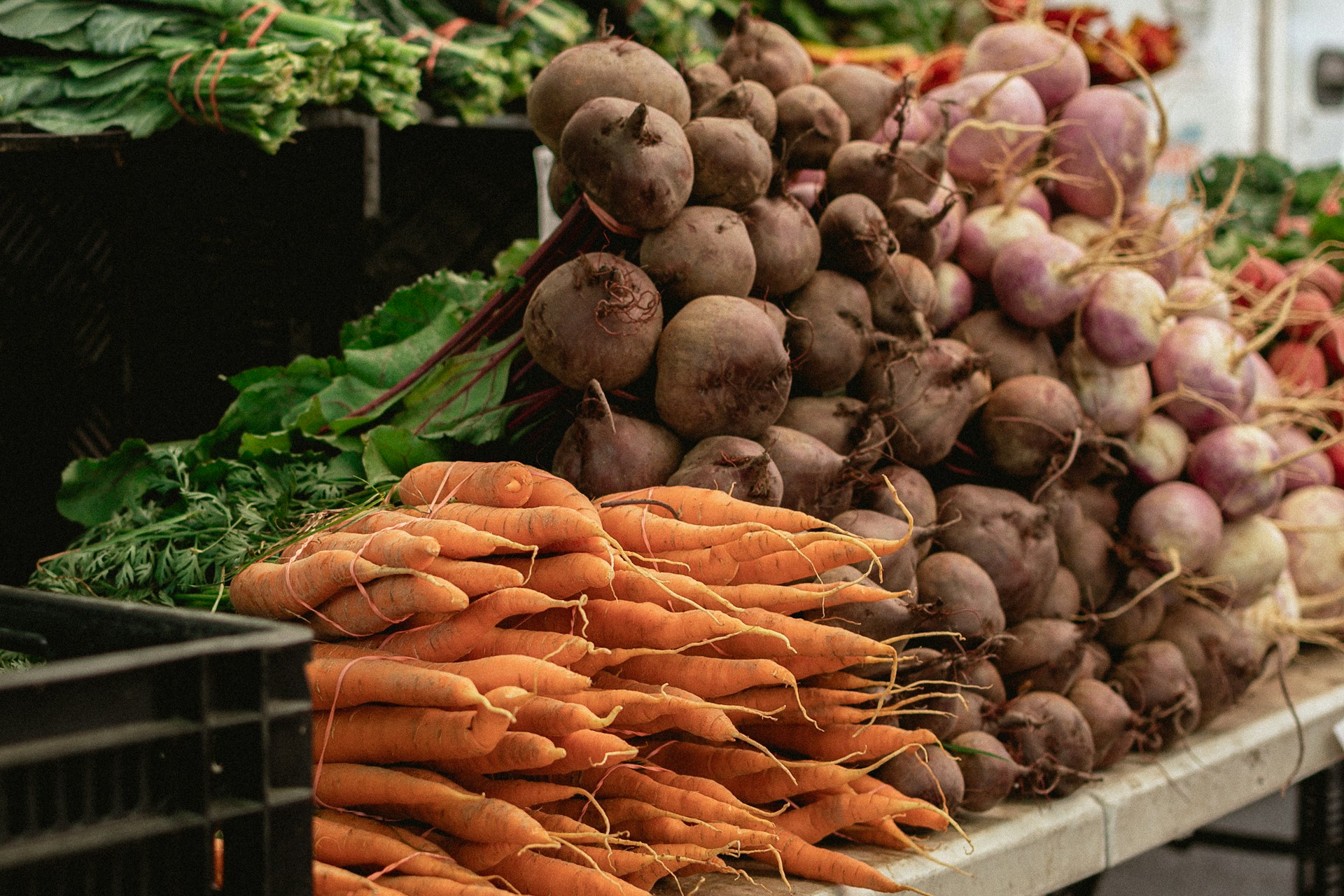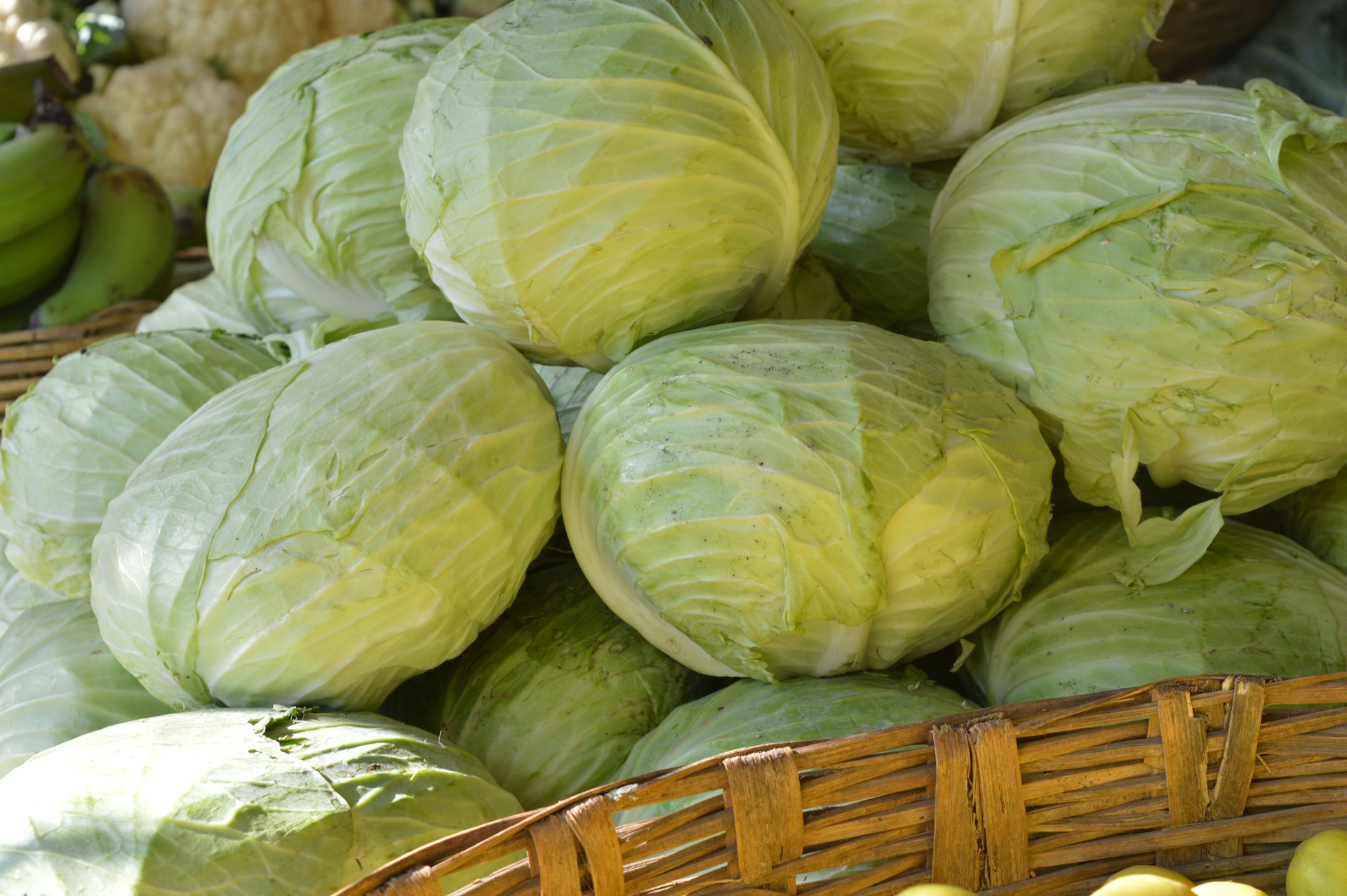Today’s globalized markets present unique challenges to those in food distribution.
Safeguarding fresh produce and maintaining its quality from field to refrigerator is fundamental.
There is a need for robust methodologies to track and trace the produce.
This aids in ensuring accountability, safety, and overall freshness.
This blog dives deeply into the possibilities of innovative system implementations.
We highlight how innovative processes can revolutionize current traceability norms in produce distribution.
System Implementations For Better Traceability In Produce Distribution
1. Blockchain Technology for Produce Tracking
Blockchain technology is an emerging revolutionary system that has the potential to greatly enhance traceability in produce distribution.
The core principle of blockchain technology is the concept of a decentralized digital ledger that maintains a record of all transactions.
This technology has been used in various sectors and has demonstrated its capacity to greatly improve supply chain management.
The application of blockchain in produce distribution aims at enhancing transparency and traceability in the supply chain.
Each transaction or change in the status of produce within the supply chain is recorded in the blockchain, and the record is immutable and cannot be altered or deleted.
This feature ensures the integrity of the tracking data, which is crucial for both producers and consumers.
Blockchain technology not only allows for tracking the location of the produce but also enables recording of important data like temperature, handling processes, and harvest data.
When applied in produce distribution, blockchain can help eliminate fraud, mislabeling, and food safety issues by providing a transparent and accurate record.
This is of great importance considering the rise in consumer demands for food safety and transparency.
Also, in cases of contamination or disease outbreaks, blockchain can help in quick and precise traceback to the source.
This ability to trace back can significantly reduce the time and cost required for investigations and mitigating outbreaks.
Moreover, with blockchain technology, all the information related to the produce can be accessed in real time allowing immediate actions based on the data.
This real-time access to data can also aid in reducing inefficiencies and waste in the supply chain.
Implementing blockchain in produce distribution however is a challenging task and requires proper infrastructure, technology, and standards for data capture.
It also needs buy-in and participation from all stakeholders involved in the supply chain to ensure its success.
The potential benefits that blockchain technology offers for traceability in produce distribution, outweighs the initial implementation challenges and suggest its feasibility for future use.
2. Barcode or QR code system.
The implementation of a Barcode or QR code system in produce distribution can greatly enhance the process of tracking and tracing products.
This system operates by providing unique tags to each product or batch of products, representing critical information such as the source farm, date of harvest and even details about the specific crop.
These codes are then scanned at every point in the produce distribution chain, creating an unbroken line of data that makes tracing the product’s journey from farm to fork a straightforward process.
One of the main advantages of using a Barcode or QR code system is the efficiency it brings about.
>The system eliminates the need for manual data recording and analysis, as the gathered information can be easily stored and accessed digitally.
This in turn reduces the risk of human errors and enables a more accurate tracking of products, ensuring that in instances of food safety scares, the source of the problem can be identified swiftly.
Furthermore, this system allows for a more detailed and specific tracking of produce by including distinct information for each scanned product or batch.
For instance, it can contain data on the type of seeds used, the farming methods practiced, fertilizer and pesticide application and even the weather conditions during the growth period.
This wealth of information can be vital not just for tracing purposes but also to improve farming practices and potentially enhance the quality of crops.
Moreover, the ease of scanning a Barcode or QR code also means that end consumers can verify the traceability of their purchased produce, increasing transparency in the food supply chain and reinforcing consumer trust.
In addition to enhancing traceability and transparency, this system can also impact other critical aspects of the produce distribution process, such as inventory management and quality control.
By continuously tracking the flow of products through the supply chain, food distribution companies can get real-time information on the state of their inventory, allowing them to manage it more efficiently.
Quality control measures can also be strengthened, as it becomes possible to identify and isolate batches of produce that do not meet the set standards.
Despite its numerous benefits, the implementation of a Barcode or QR code system also comes with certain challenges such as the need for technological infrastructure and training for staff.
However, as the food industry continues to embrace technology, it is becoming easier and more affordable to incorporate these systems into existing operations.
3. Implementing radio-frequency identification (RFID)
The use of Radio-frequency identification (RFID) technology in the tracking of produce has become an innovative and powerful tool in recent years.
With the firm implementation of RFID technology, it can provide a host of advantages that increase efficiency and accuracy in produce distribution.
These little chips or tags that are attached to produce are essentially miniature broadcasting stations that send signals to receivers (readers).
RFID technology serves as a powerful tool that offers real-time information and data to companies in the supply chain, allowing for precise tracking.
With RFID technology, the entire journey of the produce can be traced, starting from the farm, through the distribution process and up until it reaches the consumer’s hands.
RFID chips contain essential data that includes the origin of the produce, the time it was harvested, and the temperature conditions during its transit, ensuring product safety and freshness.
Furthermore, RFID technology enables instant connectivity and data sharing among various shareholders in the supply chain, which can break down communication barriers and speed up the distribution process.
The data gathered by RFID chips can aid in the decision-making process, identifying potential improvements in the supply chain, reducing losses, and effectively managing inventory levels.
Another significant advantage of RFID technology is its ability to automatically scan multiple items simultaneously without direct line of sight requirements, which can significantly speed up the processing and shipment of goods.
RFID technology also dramatically reduces the human error factor that often occurs during manual data logging process in the supply chain.
On the other hand, while there are considerable advantages to this technology, there are also a few challenges when it comes to implementation, such as cost concerns and data privacy issues.
In some instances, the cost of RFID can be a barrier for smaller businesses, making it crucial to assess the cost-benefit analysis before implementation.
Similarly, data privacy is another concern as the RFID chips contain potentially sensitive information that must be protected from unauthorized access.
No matter the barriers that might arise with this technology, the potential impact of RFID in providing accurate and efficient tracking of produce cannot be underestimated.
Overall, while the implementation of RFID technology presents certain challenges, its vast benefits geared towards improving the traceability in produce distribution underscore its importance in the modern agricultural industry.
4. Utilizing global positioning system (GPS)
The application of GPS in produce tracking allows for increased transparency and efficiency in the agricultural culture.
GPS technology can be used to monitor the location of produce across its entire distribution chain, from field to supermarket shelf.
This tracking ability is not only beneficial for ensuring food safety and preventing food fraud but also helps optimize logistics and reduce waste.
In the event of a recall or safety concern, the use of GPS systems dramatically reduces the time taken to identify and remove the affected produce from circulation.
Furthermore, the precise geolocation data provided by GPS tracking can improve the efficiency of distribution routes, reducing fuel consumption and CO2 emissions.
The GPS data can also be integrated into a blockchain or database system for further analysis and real-time updates.
Advanced GPS devices can even provide environmental data, such as temperature and humidity levels, which can help predict potential issues with produce quality and minimize losses.
Moreover, with the use of GPS tracking, farmers, distributors, and retailers have improved their ability to make informed decisions about the agricultural processes and produce quality.
GPS technology can also be useful in managing large-scale farms where tracking the location and condition of multiple crops can be a challenge.
Additionally, consumers are increasingly demanding more transparency in food sourcing and production practices, which GPS tracking can provide.
Implementing GPS technology in produce distribution can also lead to increased customer trust and loyalty, as it provides reassurance about the quality and source of their food.
While investments in GPS technology can seem significant, the expected return in terms of improved efficiency, quality control, and customer satisfaction can be substantial.
However, successful use of GPS technology for tracking produce requires proper system design and management to ensure accurate and fast tracking.
Overall, the benefits of using GPS in the context of produce distribution are manifold, providing a powerful tool for improving transparency, efficiency, and quality in the agri-food sector.
Additionally, consumers are increasingly demanding more transparency in food sourcing and production practices, which GPS tracking can provide.
The application of Near-Field Communication (NFC) tags in produce distribution systems can significantly improve traceability and efficiency.
NFC technology provides the ability to track and trace individual items or batches of produce, from the farm to the point of sale.
This high level of traceability is accomplished through an NFC tag’s ability to store and transmit critical data about the produce it’s attached to, such as harvest dates, locations, and treatment history.
With NFC tags, consumers can easily access this information using their smartphones, thus increasing transparency and trust in the distribution system.
Implementing NFC tags in produce distribution could revolutionize how we assess the quality and authenticity of our food.
NFC applications in produce distribution not only improve consumer trust but also make recall procedures more accurate and swift.
NFC tags can quickly identify contaminated batches of produce, greatly reducing the risk of widespread contamination and negative health impacts.
Moreover, NFC technology can improve operational efficiency in the distribution process.
By automating the tracking process, NFC tags eliminate human error and reduce costs related to manual data entry and storage.
Even more, the NFC system is easy to setup, scalable and has the capacity to work in synergy with other tracking technologies such as RFID, GPS and blockchain.
In addition, NFC tags are durable, reusable, and can withstand harsh conditions, making them perfect for use in produce distribution.
There is, however, a need for standardization in the implementation of NFC tags across the food supply chain.
A unified approach to using NFC tags would ensure that data collected is compatible and uniform across different stages of produce distribution.
Overall, NFC tags offer a pivotal solution for improving traceability in produce distribution, providing a bridge between producers, distributors, and consumers.
While several challenges in scale and standardization exist, the potential benefits that NFC tags offer cannot be ignored.
As technology advances, we can only expect the impact and applications of NFC tags in produce distribution to increase.
6. Database Management of Farming Logistics
The primary foundation for enhancing traceability in produce distribution greatly depends on effective database management of farming logistics.
Without maintaining an accurate, real-time database, it turns complicated to obtain complete visibility of the supply chain and identify bottlenecks before they escalate to adverse levels.
This is crucial considering the perishable and time-sensitive nature of most agricultural products.
Effective database management involves the collection, storage, manipulation, and retrieval of vast amounts of information.
With the rise of digital technologies, the utilization of centralized databases has allowed for more efficient and real-time monitoring of farming operations and produce distribution channels.
Today, such database management solutions employ advanced technologies like artificial intelligence and machine learning for predictive analytics and guided decision-making.
For instance, it is now possible to predict weather patterns and disease outbreaks efficiently, allowing farming businesses to prepare accordingly and minimize losses.
These databases also capture data from the many touchpoints of the supply chain, from farm to fork, enabling a clear line of sight for inspection, quality assurance, and regulatory compliance.
Moreover, these databases bind the entire farming logistics network and produce distribution ecosystem together, in one well-integrated system.
Also, farming businesses can use these databases to manage live stock, record field operations, and track commodity prices in real time – further simplifying the entire supply chain management.
This fertility of information from the database can also empower the formulation of a strong operations strategy that can enhance productivity and profitability.
However, it is important to note that the success of database management largely depends on its effectiveness in capturing, storing, and analyzing data.
All data entries must be accurate, up-to-date, and comprehensive for the database to provide useful insights.
Essentially, an efficient database management system for farming logistics provides a digital backbone that enhances visibility, improves operations, and promotes accountability in the produce distribution chain.
Thus, investing in quality database management systems translates to better traceability in produce distribution – a paramount aspect in ensuring food safety and consumer trust.
Overall, database management brings great advantages and opportunities in farming logistics, heralding a new era of optimized operations in produce distribution.
7. Real-time Monitoring via IoT Devices
Real-time monitoring is a powerful tool in the realm of produce distribution and tracking.
The use of Internet of Things (IoT) devices allows the entire supply chain process to be monitored continually and objectively.
With IoT, every single aspect, from the quality of the produce to the temperature and humidity during transportation, can be tracked accurately and in real-time.
This data transparency allows for greater trust and accountability in the supply chain, ultimately leading to a higher quality product.
Moreover, the data collected via IoT devices can be stored on a blockchain network, further enhancing the security and verifiability of the information.
The use of IoT devices requires no human intervention, thereby minimizing the possibility of error and manipulation.
Moreover, it enables immediate remedial action in case of any anomalies detected, ensuring the integrity of the products is always maintained.
This approach of real-time monitoring is highly efficient and provides a competitive edge for businesses in the produce tracking industry.
Implementing IoT technology also leads to a reduction in resource wastage since potential issues can be identified and resolved before they escalate.
Most importantly, these monitoring systems present a new level of traceability.
They enable businesses and consumers to know exactly where the produce came from, how it was transported, and under what conditions it was stored.
Such transparency can go a long way in fostering the trust of consumers and enhancing brand reputation in the produce industry.
Despite the phenomenal advantages, the implementation of IoT technology may pose certain challenges including infrastructure development and data privacy.
Therefore, while reaping the benefits of the IoT-based system in the produce industry, it’s also crucial for stakeholders to address these potential issues.
Undeniably, the fusion of blockchain technology and IoT paves the way for a more open, secure, and sustainable food system.
The Bottom Line
Adopting advanced technology in produce tracking can bring substantial improvements to the industry.
Blockchain technology effectively ensures transparency and trust, while the barcode or QR code system simplifies identifications.
Implementing RFID and utilizing GPS makes real-time tracking and loT devices facilitates round-the-clock monitoring possible.
Meanwhile, Near-field communication (NFC) tags enhance short range communication, and database management fundamentally streamlines farming logistics.
Thus, integrating these technologies could boost efficiency, reduce losses, and crucially, enhance the quality and safety of produce.
Implementing these innovations marks a significant step towards advanced and technology-driven agriculture.




